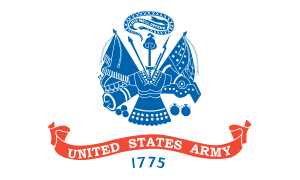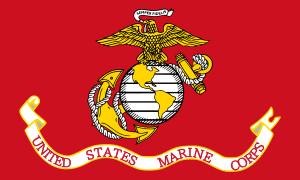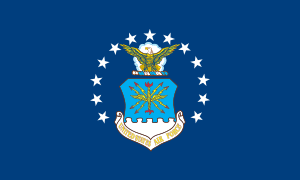Modular Integrated Communications Helmet
The Modular Integrated Communications Helmet (MICH) is a combat helmet and one of several used by the U.S. military. The MICH helmet is the primary combat helmet for use by soldiers of the United States Army. It was developed by the United States Army Soldier Systems Center to be the next generation of protective combat helmets for use by the U.S. Army.[1] The Advanced Combat Helmet is derived from the MICH.
History
.jpg)

The MICH was originally part of a series of combat helmets designed for the U.S. Army Special Operations Command as a replacement for the PASGT helmet and the various non-ballistic skateboard, bicycle, and whitewater "bump" helmets solely within those units.
The main reason for the development of the MICH was due to the protective but heavy PASGT being supplanted by these bump helmets by special forces operators due to them being lighter, more comfortable, closer-fitting, and made of plastic making them easier to mount accessories onto, especially night vision devices and communications headsets, without putting undue strain on the neck or requiring drilling holes through Kevlar to affix night vision mounting brackets, compromising its protective ability. Inevitably, operators suffered injury and deaths due to taking their wholly unsuited plastic helmets into the unforgiving environment of close-quarters warfare, especially the 1993 Battle of Mogadishu where at least one special forces operator (either SFC Shughart or MSGT Gordon) was supposedly killed by a rifle shot to the head. While no ballistic helmet of the time (or even the present time) could protect from rifle fire in close-quarters combat, it inspired the U.S. Army to create a new helmet to better protect special forces in direct action missions while providing the weight and modularity they desired that caused them to cease using the PASGT in the first place.
An initial stop-gap solution was provided in the RBR helmet, which is difficult to find information on but appears to be derived from the French SPECTRA helmet; it particularly resembles the Canadian CG634, which is a derivative. Meanwhile, development was under way of a purpose-built helmet under SPEAR MICH, which eventually produced the MICH in the late 1990s and offered in three cuts to allow operator choice in balancing protection and weight to suit their preferences and mission profile. While it did not entirely replace the plastic bump helmets, it replaced them almost completely in direct action missions where operators are most likely to suffer head injury from fragments, concussive force, or bullets. Initially, it was used almost exclusively by SOCOM; however, the U.S. Army later determined that the improvements presented by the lighter, higher-cut, and brim-less MICH over the PASGT helmet warranted organization-wide distribution, and began to release examples to the Army at large and developing the ACH as a more cost-effective solution to reequipping the entire Army. To date, the MICH and its derivative ACH has replaced the PASGT in active U.S. Army service.
The MICH is in use with all branches of the U.S. military in at least some capacity. The MICH was officially adopted as the standard issue helmet of the Air Force Security Forces. The U.S. Marine Corps evaluated the MICH during its own search for a PASGT replacement, but chose to adopt a helmet that retains the profile of the PASGT, known as the Lightweight Helmet, which incorporates improvements in the MICH such as the liner and retention system. However, marines in some activities, primarily shipboard, have been photographed wearing MICH-like helmets. MICH helmets are available for purchase by law enforcement agencies and the public. They have become popular with various SWAT units and private security companies for the very same reasons the MICH supplanted the PASGT: weight, modularity, comfort, and situational awareness.
Design
The MICH ranges in weight from about 3 lb (1.36 kg) (size medium) to just over 3.6 lb (1.63 kg) (extra large). It uses a new, more advanced type of Kevlar and provides increased protection against handgun rounds.
A pad system and four-point retention system, similar to the cushions and straps found on the aforementioned skate, bicycle, and water helmets, replaces the nylon cord suspension system, sweatband and chinstrap found on the PASGT helmet. The change provides greater impact protection and comfort for the wearer. It can be fitted with a mounting bracket for an AN/PVS-14 monocular night vision device (MNVD) on the front, similar to that on the PASGT helmet. It can also be fitted with a pair of straps on the rear to keep protective eyewear in place, as well as cloth helmet covers in varying camouflage patterns including M81 Woodland, three-color desert, USMC MARPAT, U.S. Army UCP, Crye MultiCam, and solid black for use with SWAT teams. As with its PASGT predecessor, the MICH is often worn with a band around it which features a pair of "cat eyes"—patches, some purely reflective and some also slightly luminous, on the back intended to prevent friendly fire incidents.
The MICH is also slightly smaller than the PASGT, providing 8% less coverage; this is primarily in the elimination of the brow and raising of the sides to the point that the lower brim behind the temple is "flat", compared to the "curved" profile of the PASGT. This accounts for some of the reduced weight and allows for both greater situational awareness and less obstruction of the wearer's vision, particularly when combined with Interceptor body armor. Previously, soldiers had complained that the high collar of the Interceptor combined with the two-point chinstrap pushed the back of the PASGT helmet forward, in turn moving the helmet brim over their eyes when they attempted to fire from a prone position, this is rectified in the MICH with its reduced profile and four-point chinstrap. There are also two additional cuts of the helmet available, T-2002 or "mid cut", which raises the area around the ears by about 1/2", allowing for a wider range of headsets to be used and roughly meeting the profile of the skateboard and whitewater helmets previously used by special forces. The second cut is the T-2001, or "high cut", which removes all ear protection allowing for even more headset options at the cost of all side protection.
Users

-
 Algeria
Algeria
- Algerian special Forces
-
 Argentina
Argentina
-
 Austria
Austria
-
 Brazil
Brazil
- Brazilian Army
- Brazilian Special Operations Command
- 1st Special Forces Battalion
- Brazilian Marine Corps
- Brazilian Army
-
 China
China
-
 Czech Republic
Czech Republic
-
 Denmark
Denmark -
 France
France
-
 Georgia
Georgia
- Georgian Land Forces
- Georgian MIA special forces
- Georgian Land Forces
 Germany
Germany
- Kommando Spezialkräfte
- SEK M
-
 Greece
Greece
-
 Iraq
Iraq
-
 Italy
Italy
-
 Japan
Japan
-
 Netherlands
Netherlands
-
 New Zealand
New Zealand
-
 Slovenia
Slovenia
-
 Spain
Spain
 Tunisia
Tunisia
- USGN Operators
 Turkey
Turkey
- Turkish Armed Forces: Standard issue alongside PASGT helmets.
-
 United States
United States
-
 United States Army
United States Army
-
 United States Marine Corps
United States Marine Corps -
 United States Air Force
United States Air Force
- Various police SWAT units
-
See also
- Personnel Armor System for Ground Troops Helmet
- Army Combat Uniform
- Interceptor body armor
- Kevlar
- List of contemporary combat helmets
References
External links
| Wikimedia Commons has media related to Modular Integrated Communications Helmet. |
- Advanced Combat Helmet—GlobalSecurity.org
- Advanced helmets—BodyArmorNews.com
- MICH and ACH—Olivedrab.com
- US Military Taking Delivery of Advanced Combat Helmets—Defense Industry Daily